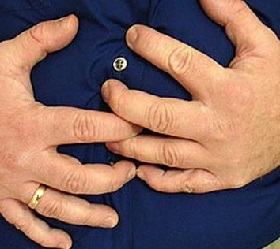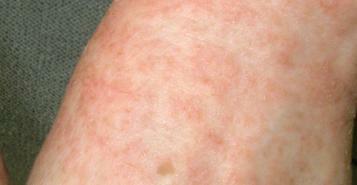Alzheimer's disease is one of the mental illnesses that arise in the age of pre-old age, the basis of which is the steadily progressing processes of brain structures atrophy. This disease is known since 1907, but for more than a century scientists are arguing about whether it is independent pathology, or it is a special, developing at an earlier age, a variant of senile dementia. Most researchers tend to the first option.
About what Alzheimer's disease is, why it arises and how it manifests itself, what are the principles of its diagnosis and treatment, and will be discussed in this article.
Content
- 1Statistics
- 2Causes and mechanism of disease development
-
3Clinical manifestations of Alzheimer's disease
- 3.1initial stage
- 3.2Stage of focal disorders
- 3.3Terminal stage
- 4Principles of diagnostics, differential diagnostics
- 5Principles of treatment
- 6Prevention
Statistics
Alzheimer's disease is ubiquitous, but its prevalence is problematic in communication with the reason described above: a different understanding by doctors of the pathology belonging to a particular type of disease. According to very average data, Alzheimer's disease is registered in 5% of patients in psychiatric hospitals.
Causes and mechanism of disease development
Unfortunately, to date, there are no reliable causes of Alzheimer's disease. It is believed that the disease is characterized by a hereditary predisposition, and there is called "gene of the family form of the disease in the case of mutations which begin atrophic processes in the brain.
In addition, the viral nature of the disease is also likely, since its clinical manifestations are very similar to those of slow viral infections.
Perhaps, etiological (causative) factors are also vascular disorders in combination with pathologically proceeding involutive processes (that is, processes of reverse development) in the central nervous system.
The basis of Alzheimer's disease is the processes of brain atrophy, especially in the region of the left parietal and temporal lobes. Morphologically, this manifests itself by dilating the cerebral cortex and replacing the functional units of the central nervous system - the neurons - with auxiliary cells called "neuroglia" - gliosis.
Clinical manifestations of Alzheimer's disease
The average age at onset of the disease is 50-55 years, but in some cases it debuts both earlier and later. The overwhelming majority of cases are women: they have a disease registered 15 times more often than men.
In the course of the disease, although conditional, but still distinguish 3 stages: the initial, the stage of focal disorders and terminal.
initial stage
For this period of the disease are the following complaints of the patient or changes in his condition:
- headache;
- dizziness;
- impaired intelligence;
- memory impairment - forgetfulness;
- worsening of attention - absent-mindedness;
- reducing the possibility of focusing on the environment.
As a result of the last four disorders, patients, despite the preserved intelligence and personality characteristics, lose the ability to orientate themselves on the terrain and in space, turning out to be helpless even in their hometown and passing, it would seem, familiar paths, they wander for a long time and can not get to point destination.
In the future, amnesia (loss of memory) progresses, past life experience is gradually lost in the direction from the latest to the early, from the complex to the simple. This process is very intensive, but the intellect of the patients persists for a long time - they realize their mental incompetence, try to "walk away" from uncomfortable questions in conversation, are embarrassed. There is irritability, anger, periodically - outbursts of anger.
Stage of focal disorders
At this stage of Alzheimer's disease, dementia is added to the aforementioned signs and focal neurologic disorders are gradually increasing: there are problems with speech (aphasic disorders), it becomes increasingly difficult for the patient to perform purposeful, coordinated actions (apraxia), the ability to recognize the surrounding environment is lost (agnosia).
One of the first focal symptoms are violations of praxis, or apraxia: the patient has difficulty with doing the usual homework, for example, when washing, cooking: he simply forgets the order actions. In test conditions, he is not able to build a geometric figure, or make a whole from the parts. At a far-advanced stage of the disease even primitive praxis suffers: the patient can not dress on his own, ignite match, and even his gait changes - becomes uncertain, slow, there are difficulties while walking on steps. Problems with gait arise due to the fact that systemic motor reflexes suffer, that is, those actions that previously carried out "by themselves now require awareness, and it, in turn, is also fully is impossible.
Develops an agraphy: a full, meaningful, letter is replaced by circular or wavy lines, which are repeated many times.
The patient loses the ability to score: develops acalculia.
Speech disorders in Alzheimer's disease are very diverse and, like other symptoms, are initially expressed slightly, but gradually increase. First of all, forgetfulness appears on dates, names and names. Later, the so-called amnestic aphasia develops: the patient experiences difficulties in naming objects, although belonging understands them. In the later stages of the illness the patient, on the contrary, pronounces the words, completely not understanding their meaning. There are also disorders of expressive speech progressing with the course of the disease: the patient changes the letters and syllables in words (it carries the name of paraphasia and sometimes so pronounced that it is almost impossible to catch the meaning of a person's speech, it sounds like a set of incomprehensible words). In addition to paraphasia, the patient's speech is characterized by logoclinies (multiple repetitions of the same syllables in the word, initially similar to stuttering) and iteration (repeating the same word or actions).
Terminal stage
The disorders described above reach maximum severity: the patient is completely helpless, can not sit or stand up, nor go alone, is in a forced, so-called, embryonic posture (since the general muscle tone is sharply elevated). Appear reflexes peculiar to babies: the patient pulls everything in his mouth, tries to grab the object with his mouth, approaching him. He can not speak, he publishes separate inarticulate sounds. There is a violent cry, crying, laughter. Eventually, the patient's body is depleted, and the person dies.
Principles of diagnostics, differential diagnostics
The diagnosis is made on the basis of a typical clinical picture of the disease and an anamnesis of its development. For a more adequate assessment of intellectual functions, specialists conduct a variety of tests. To differentiate this pathology from other types of dementia, methods can be used visualization: computer, photon emission, positron emission or magnetic resonance tomography. In a number of cases, the diagnosis is established posthumously, reveals typical changes in Alzheimer's disease when examining brain tissue at autopsy.
Alzheimer's disease should be distinguished from other types of dementia, Pick's disease and senile dementia, as well as from the pseudolaltzheimer form of vascular psychosis.
Principles of treatment
Complete recovery from Alzheimer's disease is impossible, all the methods of its therapy are palliative.
With drug treatment, as a rule, drugs of the following groups are used:
- cholinesterase inhibitors (galantamine, donezepil, rivastigmine);
- NMDA antagonist - memantine;
- neuroprotection - cerebrolysin.
In addition, the patient can be prescribed drugs that improve blood circulation of the brain, lowering the level of cholesterol, antioxidants.
In addition to drug therapy, the patient needs psychosocial assistance, which helps at least temporarily correct some of the behavioral deviations, return the patient memory and ability think.
Prevention
To anticipate and prevent the development of Alzheimer's disease is impossible, you can only reduce the risk of its occurrence. It is proved that people who have been engaged in intellectual work during their life suffer from this pathology much less often than those who avoided it. Proceeding from this, it is necessary to maintain brain activity even in old age. Reading books, solving crossword puzzles, communicating with educated people, viewing scientific and cognitive telecasts, - all these activities will keep the nervous system toned and reduce the likelihood of developing a disease Alzheimer's. Measures and measures for the prevention of chronic brain diseases, especially of vascular nature, are also important: correct eating, walking in the fresh air, sufficient physical activity, control of cholesterol level in blood.
In conclusion, it should be said that the right way of living and attentive attitude to one's own health will help to reduce the risk of development or to detect Alzheimer's disease at an early stage.
TV channel "Russia-1 a scientific and educational film on the topic "Where does memory go"
Watch this video on YouTube
Medical animation on the theme "Alzheimer's disease
Watch this video on YouTube



